Heart-Shaped unique Jesuit ring was found at the site of Fort St. Joseph, a former French stronghold dating to the 1680s in southwest Michigan. Iconographic ring has been dated to the 1700s and is thought to have been a trade trinket used when southwest Michigan was known as New France, according to experts.
During the 2022 excavation season, researchers from the Fort St. Joseph Archaeological Project have found a “Jesuit” trade ring made from copper alloy has been unearthed in southwest Michigan at the site of Fort St. Joseph.
Erika Hartley: Ring was most likely manufactured prior to its arrival at the fort
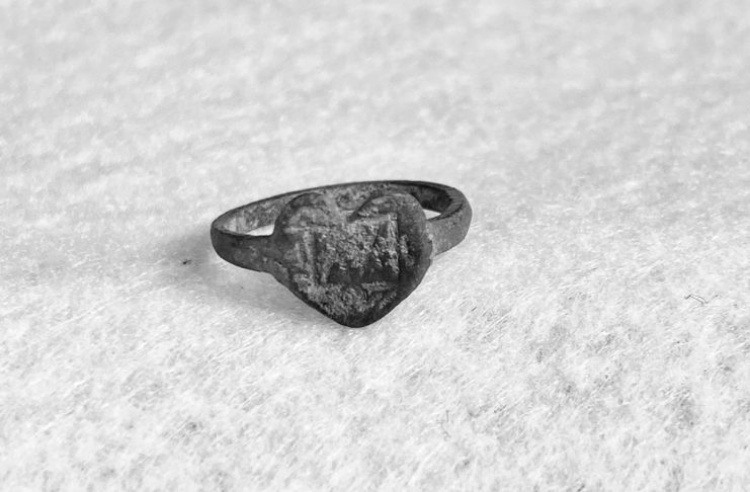
“Fort St. Joseph was occupied from the 1680s to the 1780s so the ring could have been lost at any point during that time frame,” according to Erika Hartley, field director and curatorial fellow at the Fort St. Joseph Archaeological Project.
“It was most likely manufactured prior to its arrival at the fort, but at this point it is hard to narrow down a specific date.”
The ring will be added to a collection fort artifacts at the Niles History Center, which houses the Fort St. Joseph Museum, Erika Hartley said.
Kylie Krueger: were likely an inexpensive form of jewellery
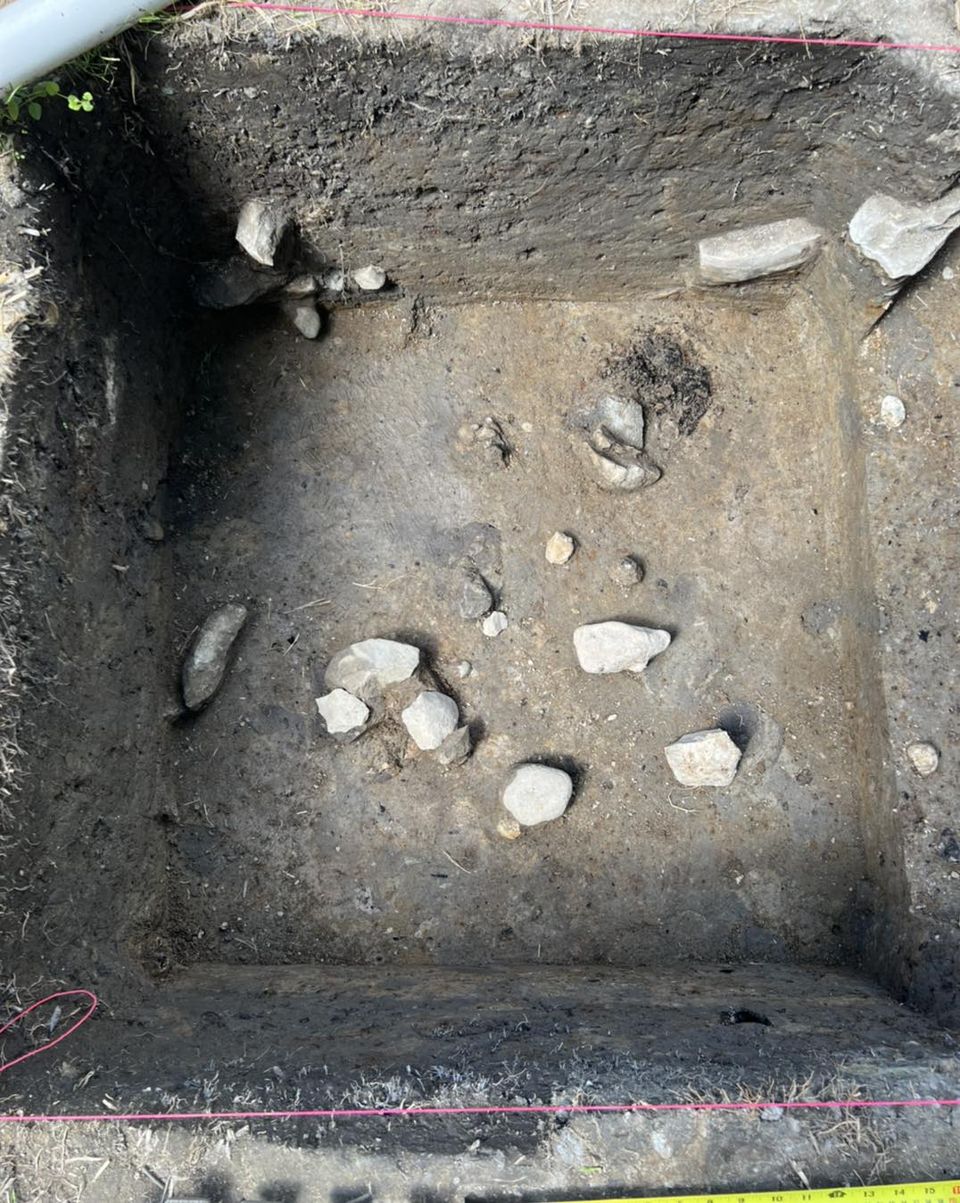
In the official blog for the project, Kylie Krueger stated: “In New France, these iconographic “Jesuit” rings were used for trade and were likely an inexpensive form of jewellery. They were decorated with a variety of motifs that had religious and/or sentimental meanings.”
“Overall, “Jesuit” rings have been recovered from seventeenth- and eighteenth-century sites like Fort St. Joseph throughout New France. They appear to have been used during both the French and British occupation, with a higher concentration during the French period”, added Kruege
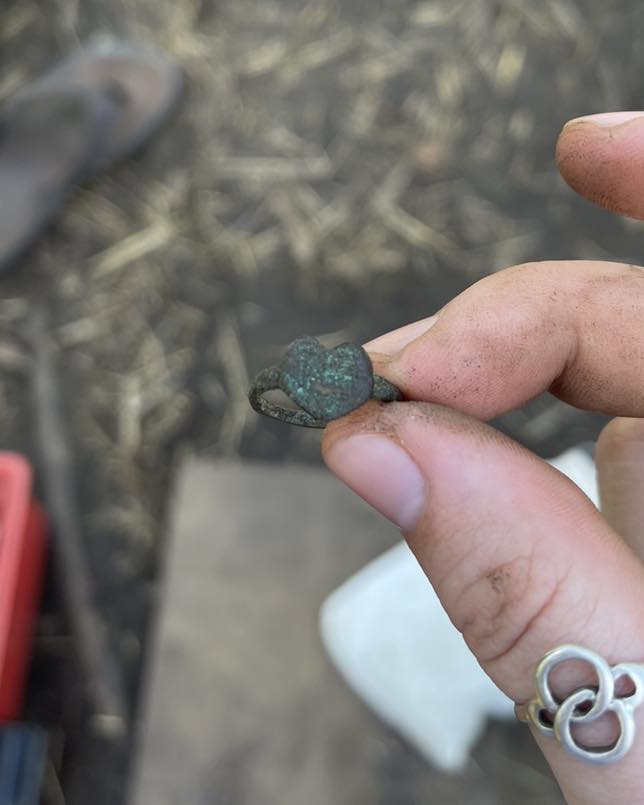
History of Fort St. Joseph's
Fort St. Joseph was established on land granted to the Jesuits by King Louis XIV, where Jean Claude Allouez constructed the Mission de Saint-Joseph in the 1680s. The French built the fort in 1691 as a trading post which supported the fur trade at the southern end of Lake Michigan.
Following the British victory over the French after the French and Indian War (the North American front of the Seven Years’ War in Europe), British forces took over the fort and used it to supply their allies against the Continentals during the American Revolutionary War.
The British maintained the fort until the United States victory in the Northwest Indian War and the signing of Jay’s Treaty in 1795, leaving the fort abandoned which fell into ruin and overtaken by forest.
Fort St. Joseph was rediscovered after an archaeological survey in 1998 which led to excavations by archaeologists from the Western Michigan University. Further excavations have continued at the site since.







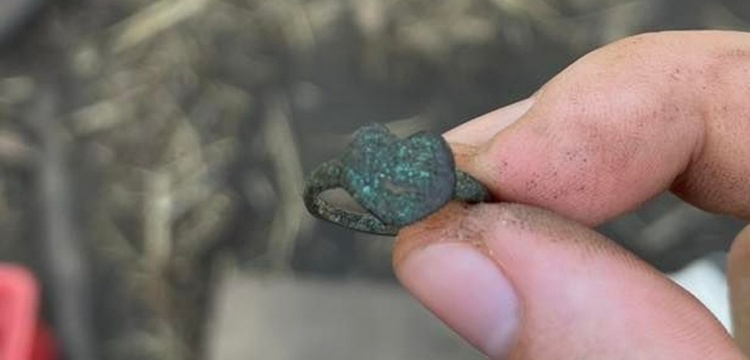
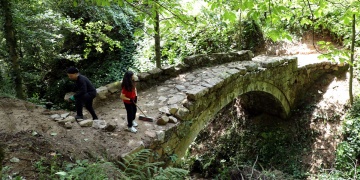 Ressam Serdar Abay, tarihi kemer köprüdeki yabani otları kızıyla temizledi
Ressam Serdar Abay, tarihi kemer köprüdeki yabani otları kızıyla temizledi 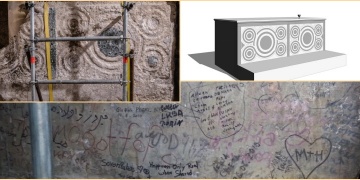 Archaeologists have discoveried a crusader altar in the Church of the Holy Sepulchre
Archaeologists have discoveried a crusader altar in the Church of the Holy Sepulchre  Komodo ejderinin demir dişli olduğu anlaşıldı
Komodo ejderinin demir dişli olduğu anlaşıldı  Doğa Taşlardan, Anadolu Tanrıçaları'ndan sonra Anadolu Bacılarının öykülerini anlatacak
Doğa Taşlardan, Anadolu Tanrıçaları'ndan sonra Anadolu Bacılarının öykülerini anlatacak 




